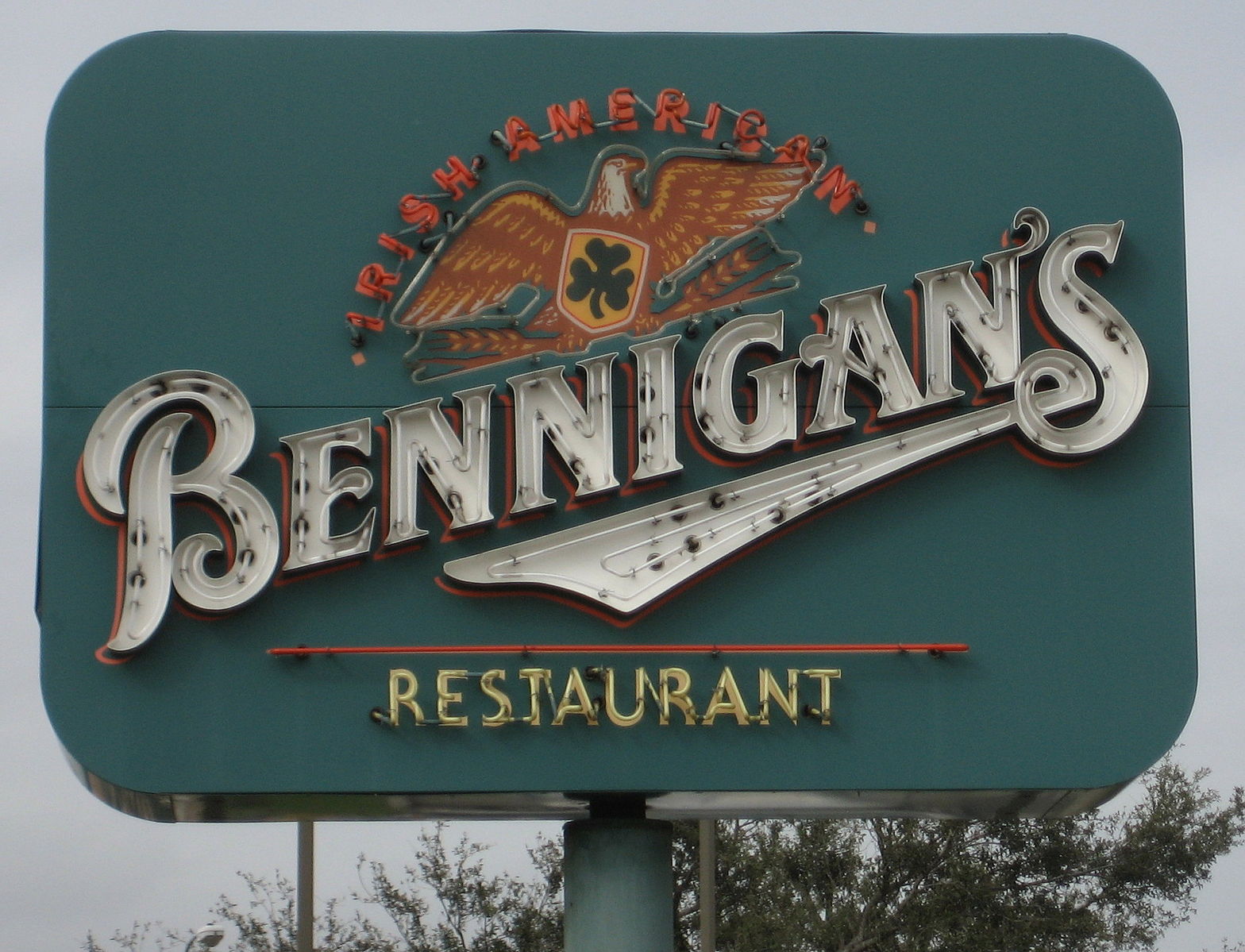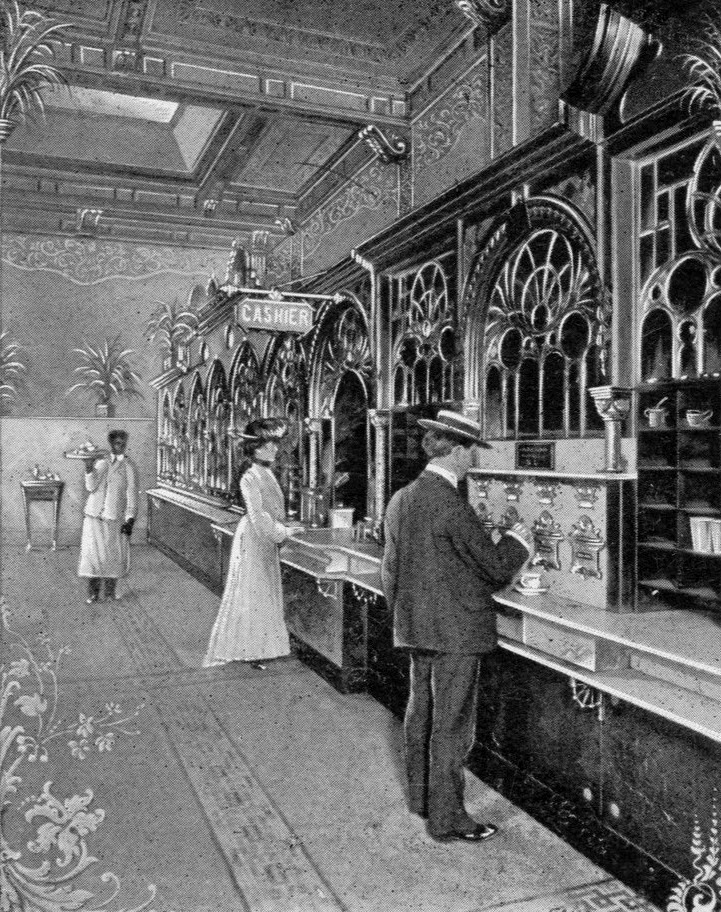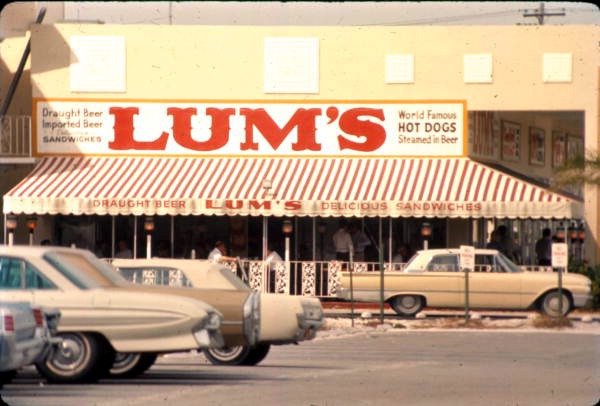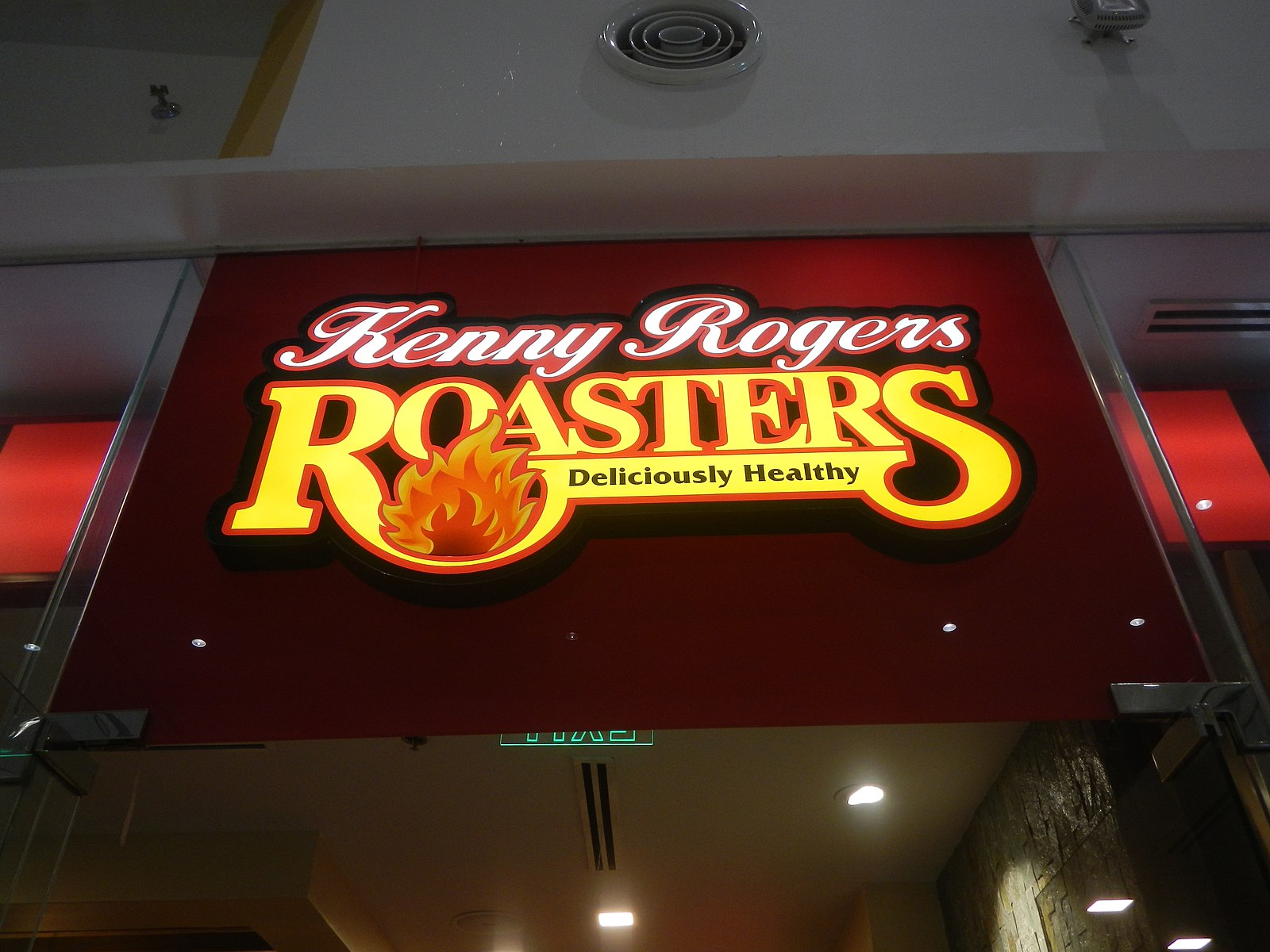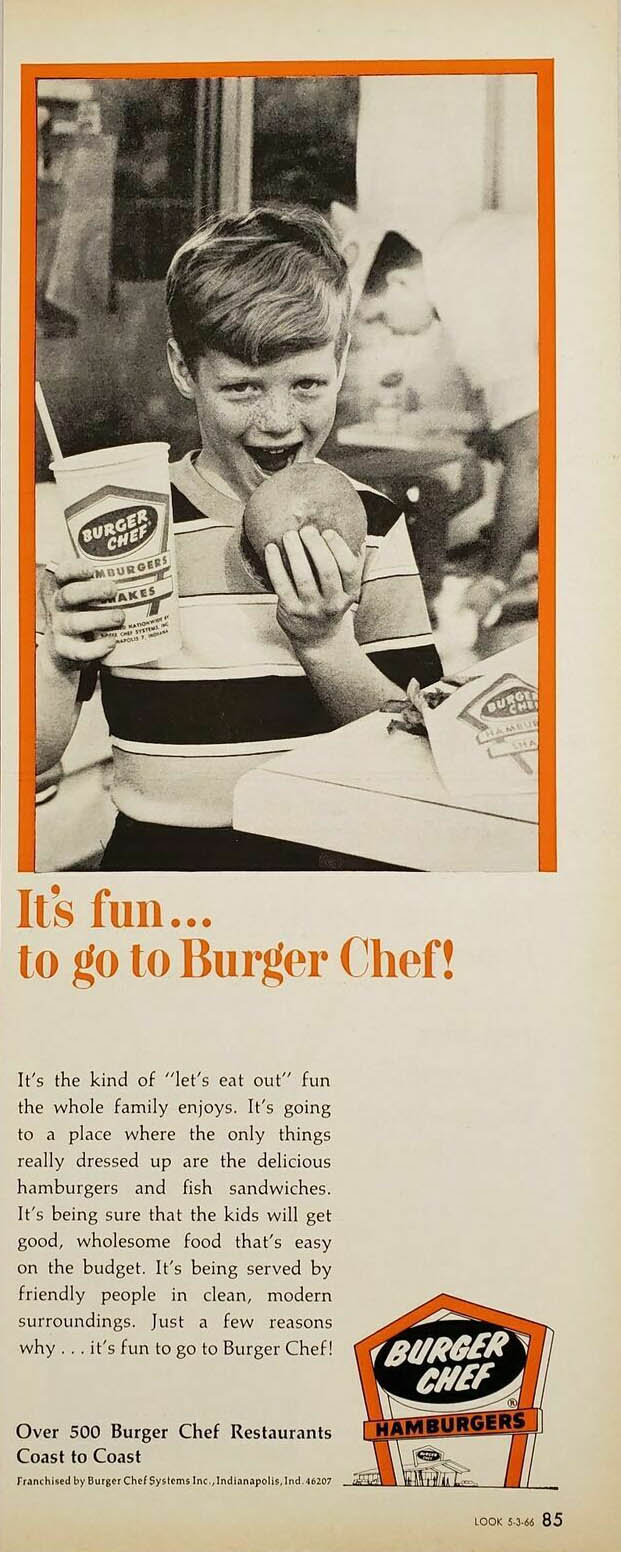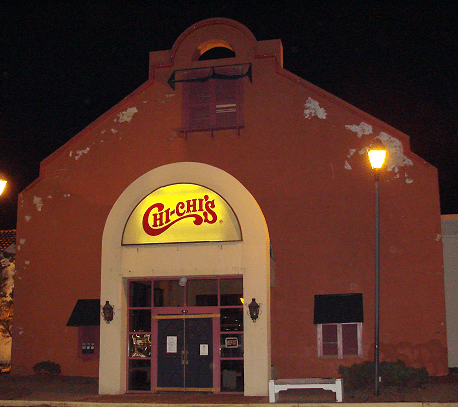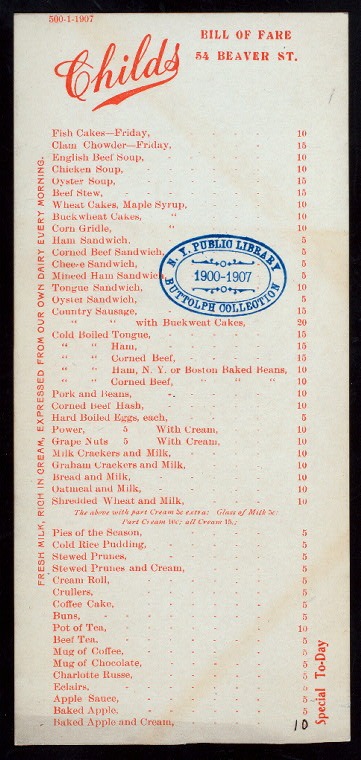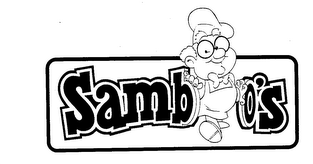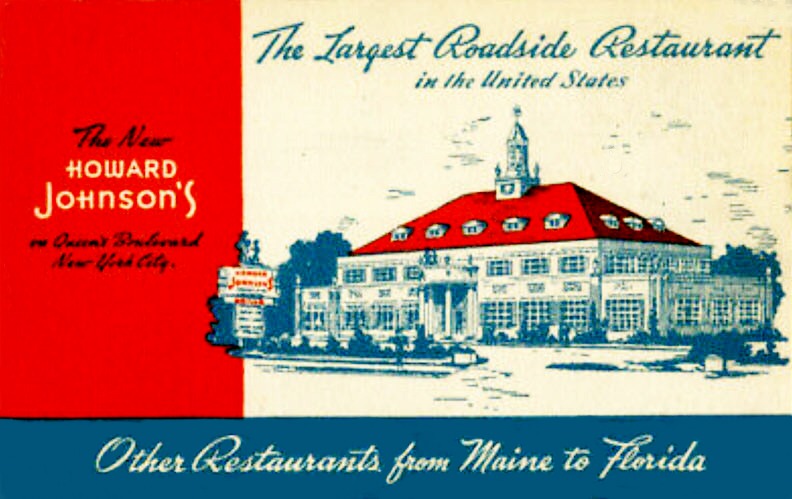Many restaurant companies have come and gone in American dining, leaving a rich culinary heritage. From historic diners’ nostalgic aromas to fast food’s revolutionary developments, these businesses have affected our eating habits and cultural identity. The shifting preferences of a nation, nostalgia for bygone eras, and the steady march of culinary advancement are all part of these stories.
Even with the overall success of the fast food and sit down restaurant industry, many chains have been unable to survive recessions, depressions, and major changes in the food industry. There are in fact a lot of formerly successful fast food restaurants that no longer exist.
Join us as we examine the rise and demise of these beloved restaurants, each with its own narrative.
1. All Star Café
The mid-1990s theme restaurant franchise All Star Café combined sports enthusiasm and casual dining. Planet Hollywood launched this franchise to capitalize on the growing trend of themed dining experiences that mixed entertainment and eating. The idea was simple yet appealing: a sports-themed restaurant where customers could eat among mementos of great athletes and events.
The décor often featured autographed jerseys, photographs, and equipment from renowned sports stars, making it a haven for sports enthusiasts.
During the popularity of this restaurant, it had 10 stores in different famous locations like Times Square and Walt Disney World. Despite its initial success and celebrity endorsements, All Star Café suffered in the competitive themed-restaurant sector. Financial issues, changing customer tastes, and the difficulty of keeping the concept fresh and appealing contributed to its collapse.
2. Horn & Hardart
This restaurant was one of a kind. It was known for serving automated fast food. They had this contraption that’s called “automat” where you would purchase prepared food from a glass window. It’s like a giant vending machine that disperses your food after you insert payment. You just have to pull the lever to have your freshly-made food.
The automats were more than just eateries; they were social spaces and symbols of modern urban life. Horn & Hardart became a cultural institution in New York and Philadelphia, where its art deco décor and affordable, high-quality food attracted everyone in society. Modern fast-food franchises and shifting consumer tastes hurt Horn & Hardart’s success.
Unfortunately, Horn & Hardart’s last location closed in 1991 but their automat restaurant style was copied by other fast food chains in Europe and Japan.
3. Lum’s
Once a name associated with informal American eating, Lum’s started out as a little hot dog stand in Miami Beach in 1956. Lum’s was established by two brothers Stuart and Clifford Perlman, and its specialty—hot dogs steamed in beer—led to its rapid rise in popularity. This creative culinary approach became a beloved hallmark dish that distinguished Lum’s from other fast-food establishments. The restaurant’s delicious and reasonably priced food, together with its casual setting, made it popular with both residents and visitors.
The Perlman brothers grew Lum’s and turned it into a full-fledged restaurant chain by capitalizing on their early success. With more than 400 outlets by 1969, Lum’s had expanded throughout the country, even to remote areas like Hawaii and Puerto Rico. The ‘Lumburger’ and other traditional American dishes were added to the menu as it expanded. Despite its swift growth and renown, Lum’s encountered difficulties in the progressively competitive restaurant sector. In the end, the business declared bankruptcy in 1982, which resulted in the closing of all stores. Once a well-known brand, Lum’s is now just associated with American fast food history.
4. Bennigan’s
One of the original casual dining and sports bar chains in the United States, Bennigan’s was once a household name in the casual dining industry. It first opened its doors in the late 1970s. Renowned for its Irish pub-inspired decor, Bennigan’s provided a distinctive eating experience by fusing a laid-back vibe with a varied menu. The chain gained rapid popularity for its substantial meals—which included standout dishes like the Monte Cristo sandwich—and extensive drink menu. Families, friends, and sports fans loved it because of its welcoming atmosphere and excellent service.
Bennigan’s struggled to keep up with changing market trends and increased competition from rival casual dining chains like Applebee’s and TGI Friday’s, despite its early success and popularity. Over the years, the chain saw multiple ownership changes. In 2008, it filed for bankruptcy, which resulted in the closure of many of its sites. Nonetheless, Bennigan’s had a long-lasting effect on the casual dining sector, influencing the ideas behind and offerings of several chain restaurants that came after. Only a few Bennigan’s stores remain open in the United States today, preserving the brand’s unique legacy for its devoted customers.
5. Minnie’s Pearl Chicken
The name Minnie’s Pearl Chicken, which was formerly very popular in the American fast-food sector, originated with businessman John Jay Hooker and legendary country music performer Minnie Pearl. Initially introduced as a direct rival to Kentucky Fried Chicken (KFC), this fast-food business gained popularity during the 1960s and 1970s. Its Southern-style fried chicken and the star power of Minnie Pearl made it stand out from the competition. The eateries served a menu that honored traditional Southern flavors in an effort to convey the spirit of homestyle cooking. They were frequently decorated with images of Minnie Pearl and a touch of Southern charm.
Minnie’s Pearl Chicken saw a rapid rise in popularity, with hundreds of shops popping up all across the country. The brand’s early success was astounding, bringing lots of people to its cozy, welcoming ambiance and mouth watering cuisine. This success, though, was short. This business had to deal with serious problems, such as poor financial management and uneven quality amongst franchises. The chain’s demise was caused by these issues as well as the intense rivalry in the fast-food sector. Minnie’s Pearl Chicken eventually vanished from the American food scene, taking with it memories of its brief but significant existence in the fast-food industry.
6. D’lites
In 1978, D’Lites emerged as a pioneer in the health-conscious fast-food market, a novel concept at the time. Taking advantage of the increased interest in healthy eating, D’Lites provided a menu that was different from standard fast-food fare. Their selection of salads, sandwiches, and burgers with fewer calories appealed to people who were eager to follow a healthy diet without sacrificing the convenience of fast food. The chain soon became well-known and opened many outlets around the country.
But D’Lites failed to sustain its pace in the very competitive fast-food sector, eventually disappearing despite its early success and a potential niche. On the other hand, its history helped to establish the widespread practice of fast-food businesses offering healthier options.
7. Wimpy
Once a well-known brand in the fast-food industry, Wimpy made a name for itself as a pioneer in the hamburger market. Wimpy began as a small Chicago burger joint in 1934 and quickly gained popularity across the globe thanks to its recognizable Wimpy-branded burgers. The chain’s allure was not limited to its delicious griddle-cooked burgers; it also offered a comfortable, sit-down dining experience that distinguished it from the rapidly expanding fast-food industry. Wimpy’s global appeal is demonstrated by its spread across continents, particularly in the UK where it became ingrained in culture.
The name of this restaurant came from Popeye’s character. But shortly after the death of Edward Gold in 1977, Wimpy’s branches started to disappear in the United States. No one purchased the rights and trademark of the chain from Gold’s estate. So legally speaking, no one owned the Wimpy stores in the States. Wimpy’s does live on internationally with its headquarters moving to the UK and then eventually South Africa.
8. Naugles
Naugles is a tex-mex restaurant in Southern California during the 1970’s. Established by Dick Naugle, a former employee of Del Taco, Naugles set itself apart with a menu that included taco burgers and bun tacos. It provided a unique combination that caught the interest of customers seeking an alternative to the standard burger and fries.
The chain’s catchphrase is “Prepare food fresh. Serve customers fast. Keep the place clean!” struck a chord with its patrons, garnering a devoted following. Naugles encountered difficulties in the competitive fast-food industry despite its creative strategy and rising popularity; ultimately, the company merged with Del Taco. With its own culinary fusion, the Naugles brand evokes pleasant memories in its fans and serves as a reminder of the variety of flavors that can be found in the fast-food sector.
9. Kenny Rogers’ Roasters
Country music icon Kenny Rogers and businessman John Y. Brown founded Kenny Rogers’ Roasters in 1990, and it soon gained popularity as a chain of restaurants renowned for its mouthwatering rotisserie chicken and unique side dishes. The brand was sold to Nathan’s in 1998 because, despite its early success and broad popularity, it faced fierce competition from well-established players like KFC and Boston Market.
After being acquired by a Malaysian conglomerate, the brand—which had struggled to retain its presence in the US—found new life in Southeast Asia, where it is still in operation today, tailoring its offerings to the tastes and preferences of the local populace.
10. Pup ‘N Taco
Pup ‘N Taco was a one-of-a-kind fast-food company that founded in 1965 and immediately established a niche for itself with a diversified menu that featured tacos, hamburgers, pastrami sandwiches, and hotdogs. Its unique blend of American and Mexican fast food quickly gained appeal, resulting in the creation of over 62 locations by 1973. However, the chain’s success was short-lived; Taco Bell acquired 99 of Pup ‘N Taco’s outlets in California in a key industry move. This acquisition marked the beginning of the end for Pup ‘N Taco, and by 2010, all of its locations had shuttered, effectively ending the fast-food chain’s distinctive culinary mix.
11. Sandy’s
Sandy’s was an intriguing chapter in the history of fast food in America. It was founded by a group of former McDonald’s employees, emerged as a direct competitor to the golden arches, with a menu that was strikingly similar to that of McDonald’s. Despite this emulation, Sandy’s battled with internal challenges such as its company structure and leasing terms. These troubles eventually led to financial problems, prompting the company to declare bankruptcy. Sandy’s was acquired by Hardee’s in the 1970s, therefore ending its brief but significant attempt to carve out a niche in the extremely competitive fast-food sector.
12. The All-American Burger
Although this burger joint was famous only in Southern California, it became well known because it was featured in the 1982 movie entitled “Fast Times at Ridgemont High.” The chain, known for its iconic American hamburgers, grew through acquisitions but finally ran into financial difficulties. The founder was suspected of fraud, which led to bankruptcy, and by 2010, all West Coast stores were shuttered.
The narrative of the All-American Burger is a mix of transitory celebrity and the harsh reality of the competitive fast-food industry. All of its locations in the West Coast were closed in 2010. However, a Massapequa, Long Island based company is using the same name and logos in the East Coast and they have been flipping burgers since 1961.
13. Burger Chef
Burger Chef, a key player in the American fast-food industry, was established in Indianapolis in 1954. At its peak, the chain had over 1,200 outlets, making it one of the largest burger chains in the country, rivaling McDonald’s. Burger Chef was a pioneer in the sector, known for its unique offers such as the Funmeal for children. However, the quick expansion resulted in a drop in food quality and operational difficulties. These flaws, combined with severe competition, contributed to the chain’s slow downfall. By the late 1980s, most of its stores had been sold to Hardee’s, effectively ending Burger Chef’s reign as a fast-food industry household name.
14. Steak and Ale
Steak and Ale was a pioneer in the American casual dining scene, recognized for its unusual blend of an exquisite steakhouse experience at cheap rates. It was opened in Dallas, Texas in 1966. Its unique concept included a specialty salad bar as well as complimentary beverages and desserts, and it immediately gained a devoted following. The restaurant’s comfortable, tavern-like setting and high-quality steaks provided a unique eating experience that distinguished it from competitors.
Despite its initial success, Steak and Ale struggled to stay up with the changing dining business and consumer tastes. The last branch of the chain closed in 2008, leaving behind a history of pioneering the concept of affordable elegance in casual dining. In a surprising turn of events, its parent firm began promoting franchise opportunities in 2017, implying a possible rebirth of this once-popular business.
15. Mighty Casey’s
In the 1980s, Atlanta’s Mighty Casey’s fast-food restaurant was known for its inventive and tasty cuisine. The restaurant became a favorite for its exceptional hamburgers, cajun wings, chopped BBQ sandwiches, and frankfurters, drawing lengthy lines of customers. Mighty Casey’s stood out in the fast-food industry by combining traditional American fast cuisine with Southern spices. Mighty Casey’s ended as an independent brand in 1994 when Krystal bought it. Its short-lived legacy is remembered by those who enjoyed its unique cuisine.
16. House of Pies
Al Lapin Jr. launched the adored House of Pies company in 1965. It was well-known for its wide and delicious assortment of pies, which included anything from traditional apple to more unusual varieties. In addition to its famous pies, the business offered a range of diner-style meals, which made it a favorite with people who like dessert as well as those who were looking for a full meal.
Despite its early success and renown, House of Pies eventually had financial difficulties and declared bankruptcy. Still open today in Los Angeles and Houston, a couple of the original establishments have endured the test of time. Both residents and tourists adore these remaining locations, which act as sentimental flashbacks to the chain’s glory days and its influence on American cuisine.
17. Chi-Chi’s
With its variety of Mexican food, Chi-Chi’s, a restaurant chain established in 1975. It added a distinct taste to the American eating scene. It grew rapidly, with 210 sites by 1995, and gained popularity as a place to go for celebratory Mexican food in a vibrant setting. However, a terrible Hepatitis A epidemic in one of the chain’s eateries that resulted in four fatalities abruptly put an end to the business’s growth.
The brand’s reputation and customer trust were seriously damaged by this public health catastrophe, which ultimately led to the business’s downfall in the United States. Even though Chi-Chi’s eventually handed off its business, it continues to provide its famous Mexican food to customers all over the world and is still present in a few foreign countries, including Kuwait, Luxembourg, Belgium, and the United Arab Emirates.
18. Child’s
Samuel Childs established Child’s restaurant chain in New York City in 1889. It had a big impact on how Americans ate. Child’s, which gained popularity for its fine dining experiences and delicious food, expanded quickly and at one point had about 125 locations in the US and Canada. Serving more than 50 million meals a year and establishing itself as a mainstay of urban dining.
The chain saw especially high demand in the 1920s and 1930s. But there were financial setbacks in the 1940s that resulted in bankruptcy. Child’s carried on with business activities despite this setback for a while, eventually becoming the Hotel Corporation of America in the 1960s. A brand that had once been a mainstay of American eating culture came to an end when the surviving sites were sold to different businesses.
19. Henry’s Hamburgers
Henry’s Hamburgers, a significant 1960s fast-food business, was created by the Bresler’s Ice Cream Company to compete directly with McDonald’s. Henry’s swiftly expanded, seizing on the booming fast-food market with its simple yet enticing menu of hamburgers, fries, and milkshakes at low rates. As the 1970s came, however, the business began to struggle.
Henry’s couldn’t keep up with the constantly expanding fast-food sector controlled by giants like McDonald’s and Burger King because it lacked drive-thru service and failed to diversify and update its menu. This inability to adapt resulted in a slow collapse, and now, only one Henry’s Hamburgers site remains in Benton Harbor, Michigan, serving as a sentimental relic of a once-dominant chain.
20. Schrafft’s
Schrafft’s, which began as a candy store in New York in 1898, grew into a popular restaurant franchise. It reflected the beauty and refinement of early twentieth-century dining. By 1937, Schrafft’s had approximately 43 sites along the East Coast. steadily, it became a popular destination for its outstanding food and refined atmosphere, especially among women shoppers and business people.
Schrafft’s was more than just a place to dine; it was a social institution, a symbol of New York’s urban culture, known for its ice cream, hot fudge sundaes, and a cuisine targeted to a more premium clientele. However, shifting social conventions, the introduction of fast food, and changes in dining habits contributed to its demise, and the once-iconic chain shuttered its doors in the early 1980s, leaving wonderful memories and a legacy in the annals of American culinary history.
21. Pumper Nic
Pumper Nic, an Argentine fast-food restaurant that debuted in the late 1970s, quickly became a cultural icon. It won the hearts of Argentinians with its distinctive hamburgers, hot dogs, and unforgettable advertising campaigns. Pumper Nic distinguished itself from worldwide giants like McDonald’s and Burger King, who entered the Argentine market later, with its original flavors and local modifications of basic fast-food dishes.
The chain’s popularity skyrocketed in the 1980s, and it became a symbol of Argentina’s modern fast-food culture. Pumper Nic, however, began to fail in the 1990s due to financial mismanagement and increased competition from international brands. The chain eventually went out of business, leaving behind fond memories for those who grew up appreciating its unusual choices and experiencing the novelty of fast food in Argentina at the time.
22. Gino’s Hamburgers
Gino’s Hamburgers, founded in 1957 by Baltimore Colts football players Gino Marchetti and Alan Ameche, together with their buddy Louis Fischer. It was a symbol of American entrepreneurship and community connection. Gino’s quickly became a cherished business in the Mid-Atlantic region of the United States. It was known for its Gino Giant, a direct competitor to McDonald’s Big Mac, and its Kentucky Fried Chicken franchise within the stores.
By the early 1970s, the chain had expanded to over 300 outlets thanks to its unique blend of quality fast food and sports celebrity appeal. However, in 1982, Marriott Corporation purchased Gino’s and converted the majority of its sites into Roy Rogers Restaurants. Gino’s original run came to an end, but its legacy carried on in the hearts of its faithful consumers.
23. Sambos
In American dining history, Sambo’s—a restaurant business started in 1957 in Santa Barbara, California by Sam Battistone Sr. and Newell Bohnett. It has a complicated background. In addition to being a blend of the names of the founders, the name originally referred to the controversial children’s book “The Story of Little Black Sambo.” By the late 1970s, the chain which was well-known for its inexpensive, round-the-clock diner-style service had grown significantly, with over 1,100 sites across the country.
However, controversies surrounding the character’s name and the racial overtones of “Little Black Sambo” stunted Sambo’s growth. The chain rebranded certain stores and made an effort to change its image in response to mounting criticism and shifting social attitudes. Despite these initiatives, there was a notable fall as a result of the financial difficulties. By the early 1980s, most locations had closed or been sold, leaving only the original Sambo’s in Santa Barbara, which operated under the same name until 2020, when it was rebranded, ending an era for a brand that symbolized a bygone social and cultural landscape.
24. Beefsteak Charlie
After opening in New York City in the early 20th century, Beefsteak Charlie’s was known for its large quantities and slogan, “You’re gonna get spoiled.” Beefsteak Charlie’s embodied 1970s and 1980s luxury with its all-you-can-eat salad bar, shrimp, and limitless beer, wine, or sangria. The brand, which had over 60 sites, was popular with families and large groups for its hearty steaks and cozy atmosphere.
Beefsteak Charlie’s struggled with shifting dining trends and rising competition. The chain declined as it failed to adapt to the market. Most of its establishments disappeared by the late 1980s, leaving behind memories of a time when dining out was abundant and charming.
25. Howard Johnson’s
Howard Johnson’s, once the largest restaurant chain in the US, started as a soda fount
ain in Quincy, Massachusetts, in 1925 and represents American culture. With its orange-roofed buildings, the chain was known for its 28 ice cream flavors, fried clams, and “Tendersweet” fried chicken. Howard Johnson’s was a highway classic for reliable, family-friendly food and lodging. The 1960s and 1970s saw over 1,000 HoJo restaurants and 500 motor lodges nationwide. In the late 20th century, fast-food businesses and shifting consumer tastes hurt Howard Johnson’s. The orange roofs faded, and by the 21st century, only a few original restaurants remained, ending an era for a renowned American brand.
The Takeaway
These former restaurant brands’ stories, from Henry’s Hamburgers’ revolutionary fast food to Howard Johnson’s family-friendly dining, show the dynamic and often merciless nature of the food industry. Each business left its stamp on American cuisine through unique menu items, memorable branding, or unique eating concepts. However, when consumer preferences changed and competition increased, many of these businesses failed to adapt and closed. As we remember these renowned restaurants, we also appreciate the industry’s constant evolution and new culinary experiences.

